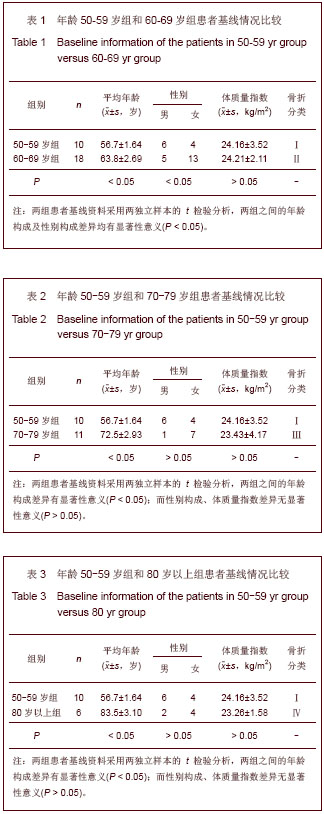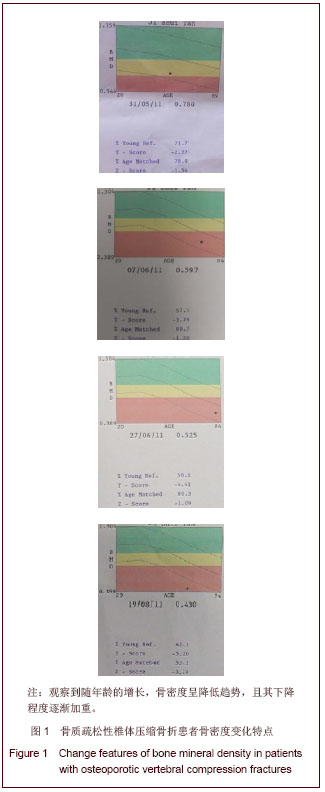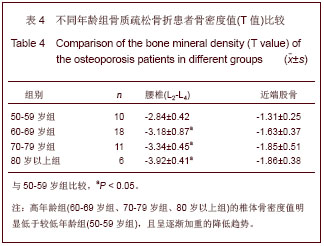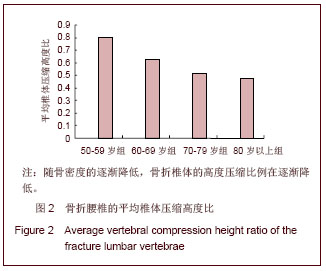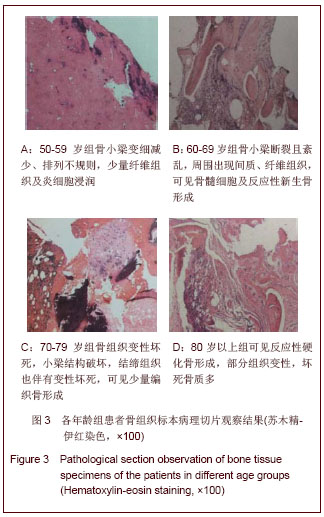| [1]An Z,Yang DZ,Zhang ZJ,et al. Zhongguo Guzhi Shusong Zazhi. 2002;8(1):82-83.安珍,杨定焯,张祖君,等.骨质疏松性脊椎压缩性骨折流行病学调查分析[J]. 中国骨质疏松杂志, 2002,8(1):82-83.[2]Li NH,Qu PZ,Zhu HM,et al. Zhonghua Yixue Zazhi: Yingwenban. 2002;115(5):773-775.李宁华,区品中,朱汉民,等.中国部分地区中老年人群骨质疏松症患病率研究[J].中华医学杂志:英文版,2002,115(5):773- 775.[3]Ettinger MP. Aging bone and osteoporosis: strategies for preventing fractures in the elderly. Arch Intern Med. 2003; 163(18):2237-2246.[4]Fechtenbaum J, Cropet C, Kolta S,et al.The severity of vertebral fractures and health-related quality of life in osteoporotic postmenopausal women. Osteoporos Int. 2005;16(12):2175-2179.[5]Xu WH,Ma Y,Li Y,et al. Jiangxi Yixueyuan Xuebao. 2005; 45(5):21-23,27.徐文华,马勇,李云,等.椎体骨密度与椎体生物力学的关系[J]. 江西医学院学报, 2005, 45(5):21-23,27.[6]Xu SW,Gu GH,Zhao GF,et al. Zhonghua Jizhen Yixue Zazhi. 2002;11(5):324-326.徐少文,顾耕华,赵光锋,等.实验性骨质疏松性骨折愈合中的骨密度及组织学观察[J].中华急诊医学杂志,2002,11(5):324-326.[7]Wu L,Wu YN,Shen Y,et al. Yunnan Yiyao. 2007;28(1):11-14.吴玲,吴亚楠,沈芸,等.骨质疏松性骨折与老年保健[J].云南医药, 2007,28(1):11-14.[8]Hao YQ,Dai KR. Zhongguo Guzhi Shusong Zazhi. 2005;11(3): 273-277.郝永强,戴尅戎.骨质疏松性骨折愈合与骨量、骨结构及力学性能相关性的实验研究[J].中国骨质疏松杂志, 2005, 11(3):273-277.[9]Hulme PA, Boyd SK, Ferguson SJ. Regional variation in vertebral bone morphology and its contribution to vertebral fracture strength.Bone. 2007;41(6):946-957.[10]Vega E, Ghiringhelli G, Mautalen C,et al. Bone mineral density and bone size in men with primary osteoporosis and vertebral fractures.Calcif Tissue Int. 1998;62(5):465-469.[11]Xiao YY,Zhang JS,Hua BX,et al. Zhongguo Yixue Yingxiang Jishu. 2002; 18(7):625-627.肖越勇,张金山,华伯勋,等. 定量CT骨密度测量预测椎体压缩骨折的实验研究[J].中国医学影像技术, 2002, 18(7):625-627.[12]Konermann W, Stubbe F, Link T,et al. Axial compressive strength of thoraco-lumbar vertebrae--an experimental biomechanical study. Z Orthop Ihre Grenzgeb. 1999;137(3): 223-231.[13]Ebbesen EN, Thomsen JS, Beck-Nielsen H,et al. Age- and gender-related differences in vertebral bone mass, density, and strength.J Bone Miner Res. 1999;14(8):1394-1403.[14]Xu L.Zhongguo Guzhi Shusong Zazhi. 2000;6(2):44-47.徐苓. 骨质疏松症的流行病学调查[J].中国骨质疏松杂志, 2000, 6(2):44-47.[15]Bai B,Jazrawi LM,Kummer FJ,et al. The use of an injectable, biodegradable calcium phosphate bone substitute for the prophylactic augmentation of osteoporotic vertebrae and the management of vertebral compression fractures.Spine (Phila Pa 1976). 1999;24(15):1521-1526.[16]Tohmeh AG, Mathis JM, Fenton DC, et al. Biomechanical efficacy of unipedicular versus bipedicular vertebroplasty for the management of osteoporotic compression fractures.Spine (Phila Pa 1976). 1999;24(17):1772-1776.[17]Feltrin GP, Macchi V, Saccavini C,et al. Fractal analysis of lumbar vertebral cancellous bone architecture.Clin Anat. 2001;14(6):414-417.[18]Heaney RP. Pathophysiology of osteoporosis. Endocrinol Metab Clin North Am. 1998;27(2):255-265.[19]Briggs AM, Greig AM, Wark JD.The vertebral fracture cascade in osteoporosis: a review of aetiopathogenesis. Osteoporos Int. 2007;18(5):575-584.[20]Kumasaka S,Asa K, Kawamata R, et al. Relationship between bone mineral density and bone stiffness in bone fracture. Oral Radiol. 2005; 21:38-40.[21]McDonnell P,McHugh PE, O'Mahoney D.Vertebral osteoporosis and trabecular bone quality.Ann Biomed Eng. 2007;35(2):170-189.[22]Jager PL,Jonkman S, Koolhaas W, et al. Combined vertebral fracture assessment and bone mineral density measurement: a new standard in the diagnosis of osteoporosis in academic populations.Osteoporos Int. 2011;22(4):1059-1068.[23]Shen NJ, Kuhn V, Eckstein F, et al.Zhongguo Guzhi Shusong Zazhi. 2002; 8(3):222-225.沈宁江, Kuhn V, Eckstein F, et al. 老年及不同老龄段脊柱椎体骨密度测定研究[J]. 中国骨质疏松杂志, 2002, 8(3):222-225.[24]Antonacci MD, Mody DR, Rutz K,et al. A histologic study of fractured human vertebral bodies. J Spinal Disord Tech. 2002; 15(2):118-126.[25]Diamond TH, Clark WA, Kumar SV. Histomorphometric analysis of fracture healing cascade in acute osteoporotic vertebral body fractures. Bone. 2007;40(3):775-780.[26]Chen H, Shoumura S, Emura S,et al. Regional variations of vertebral trabecular bone microstructure with age and gender.Osteoporos Int. 2008;19(10):1473-1483.[27]Legrand E, Chappard D, Pascaretti C,et al.Trabecular bone microarchitecture, bone mineral density, and vertebral fractures in male osteoporosis. J Bone Miner Res. 2000;15(1): 13-19.[28]Ravn P, Rix M, Andreassen H,et al. High bone turnover is associated with low bone mass and spinal fracture in postmenopausal women. Calcif Tissue Int. 1997;60(3): 255-260.[29]Zhang SX,Guo XQ,Qiu YJ,et al. Shiyong Fangshexue Zazhi. 2008; 24(10):1414-1417.张淑娴,郭新全,邱玉金,等.兔椎体骨折愈合过程的X线表现与病理学变化对照研究[J].实用放射学杂志, 2008, 24(10):1414- 1417.[30]Li SP. Zhongguo Zuzhi Gongcheng Yanjiu yu Linchuang Kangfu. 2011;15(20):3767-3770.李素萍.骨质疏松动物模型的研究现状[J].中国组织工程研究与临床康复, 2011,15(20):3767-3770. |
